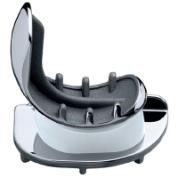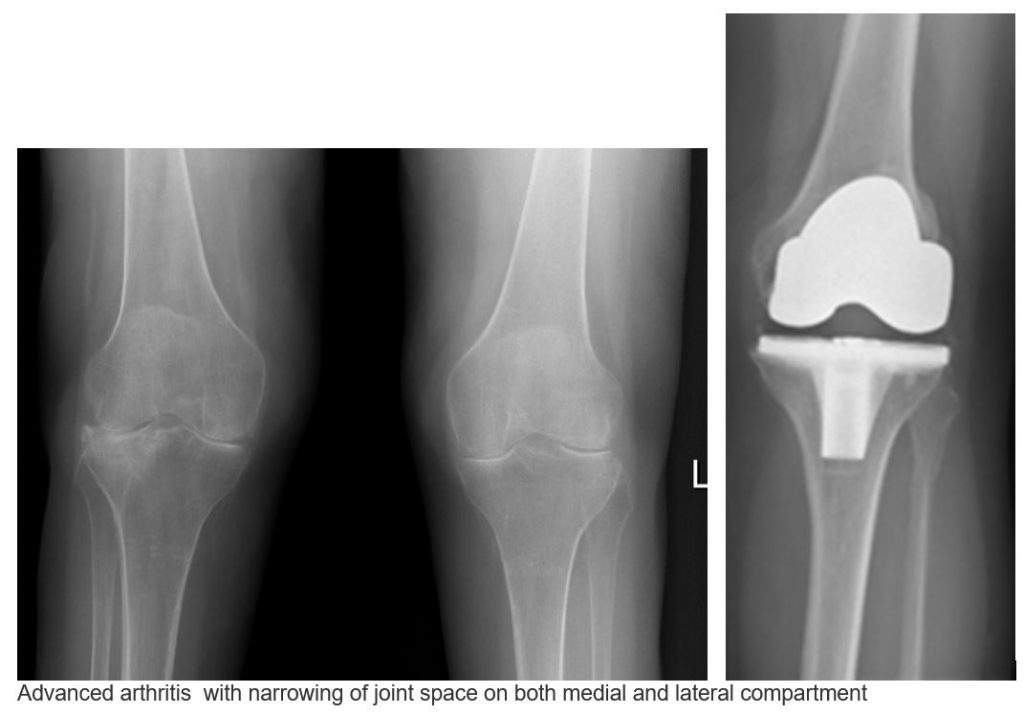
The knee joint is one of the largest and most complex joints in the body. The knee is made up of the lower end of the thigh bone (femur) which rotates on the upper end of the shin bone (tibia) and the kneecap (patella) which slides in a groove on the end of the femur. Large ligaments attached to the femur and the tibia provide stability. The long thigh muscles give the knee strength.
Total knee replacement involves replacing the injured or damaged part of the knee with artificial parts. Your new knee will consist of a metal component on the end of your thigh bone, a metal and plastic spacer on the upper end of the shin bone and if needed a plastic button on the kneecap.
Your Surgeon may recommend joint replacement surgery if you have significant arthritis. Joint replacement implants to resurface the joint are typically made from metal alloy and polyethylene (plastic). The implants are designed to restore function and eliminate as much discomfort as possible while allowing you to return to a more active lifestyle.

Arthroscopic picture of knee with advanced arthritis

The surgical technique:





Partial Knee Replacement:

The knee is composed of three separate compartments. Osteoarthritis sometimes develops in only one compartment of the knee, while the other two compartments remain relatively healthy. Patients who have osteoarthritis in only one compartment may be candidates for partial knee replacement.
A partial knee replacement involves resurfacing only the part of the knee that is worn. This operation is usually carried out if only part of the knee is worn.
The advantage of a partial knee is that it resurfaces only the damaged cartilage of the knee, preserving the undamaged cartilage. The benefits of this procedure include a smaller incision, a quicker recovery, and less bone removal.



Post operative Radiographs of partial knee replacement



Patellar femoral replacement:


Partial or total knee replacement?

Total Knee

Partial Knee


Computer navigated Knee replacement surgery:
Computer navigated surgery is a state-of-the-art surgical technique which increases the accuracy of knee replacement surgery and improves the longevity and functioning of the artificial joint.
Everyone is different and so are their knees! Computer navigated surgery takes into account each patient’s shape and size and allows a surgeon to use, what is essentially a mini GPS system, to register the exact bio-mechanic anatomy of the leg and knee joint to ensure each replacement is as accurate as possible.
Computer navigated surgery maps the position of the bones which make up each patient’s knee joint using sensors which are placed at either side of the knee. These create a detailed image and provide real-time information on a computer screen which helps the surgeon accurately guide the implant into position.
Computer navigated systems, such as OrthoPilot, do not perform the operation! They do not replace the skill and experience of your surgeon, but are an invaluable tool which enhance the outcome of total knee replacement operations.


